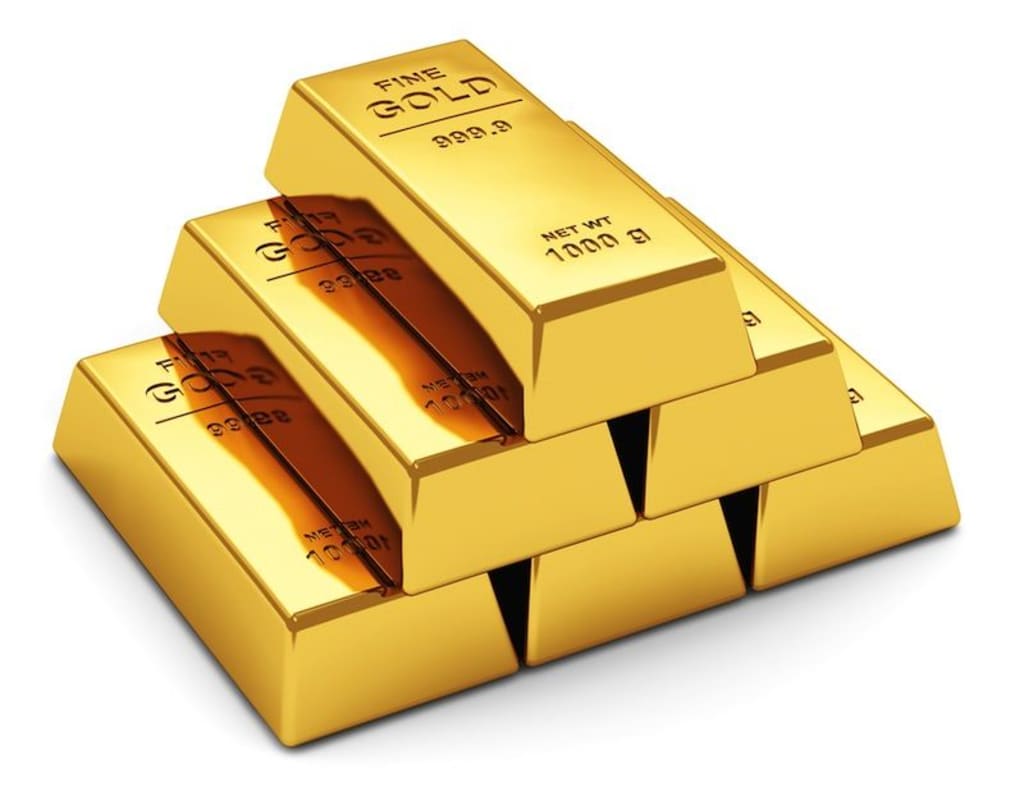
Gold is considered one of the most precious and expensive metals in the world, with a rich history spanning thousands of years. Its value is derived from a combination of factors, including its rarity, durability, versatility, cultural significance, and global demand. In this explanation, we will explore these factors in more detail to understand why gold is so expensive.
1. Rarity and Limited Supply:
Gold is relatively rare in the Earth's crust, making up only about 0.003 parts per million. It is estimated that all the gold ever mined throughout history would fit into just three Olympic-sized swimming pools. The limited supply of gold contributes to its high value, as obtaining it requires significant mining operations, exploration, and extraction processes. Gold mining is an intensive and costly endeavor, often involving the removal of large amounts of ore to obtain small quantities of pure gold.
2. Store of Value and Safe Haven Investment:
Gold has been recognized as a store of value for centuries. Unlike fiat currencies or other commodities that can be subject to inflation or devaluation, gold has maintained its purchasing power over time. During periods of economic uncertainty, gold is often seen as a safe haven investment. It provides a hedge against inflation, currency fluctuations, geopolitical tensions, and stock market volatility. The demand for gold as a reliable investment option further drives up its price.
3. Industrial and Technological Applications:
Gold has a wide range of industrial and technological applications due to its unique physical and chemical properties. It is highly malleable, ductile, and an excellent conductor of electricity and heat. These characteristics make gold valuable in various industries, including electronics, dentistry, aerospace, telecommunications, and more. Gold is used in electronic components, wiring, connectors, and medical devices. The demand for gold in these industries adds to its price.
4. Jewelry and Ornamental Use:
Gold has been used for jewelry and ornamentation throughout history, across different cultures and civilizations. Its lustrous appearance, resistance to tarnish, and rarity make it highly desirable for creating intricate and beautiful pieces. Gold jewelry is often associated with wealth, luxury, and status. The demand for gold jewelry, particularly in countries with cultural and social significance attached to gold adornments, significantly contributes to its high price.
5. Central Bank Reserves and Financial Stability:
Central banks around the world hold significant quantities of gold as part of their foreign exchange reserves. These reserves act as a safeguard and provide stability to a country's currency. Central banks often acquire and hold gold to diversify their reserves, reduce risk, and maintain confidence in their monetary systems. When central banks buy or sell gold, it can impact the global gold market and influence its price. Central bank demand for gold contributes to its high value.
6. Global Demand and Investor Speculation:
Gold is a globally recognized and traded commodity. Its demand comes from a variety of sources, including individual investors, institutional investors, jewelry manufacturers, technology companies, and central banks. Factors such as geopolitical tensions, economic conditions, interest rates, and currency fluctuations can drive investor speculation and increase demand for gold as a perceived safe asset. Increased demand, especially from large-scale investors, influences the price of gold.
7. Cultural and Historical Significance:
Gold has played a prominent role in human history, culture, and religion. It has been used as a symbol of wealth, power, and prestige across civilizations. The cultural significance attached to gold further enhances its desirability and value. Additionally, gold has been used as a form of currency and a medium of exchange for centuries. Its historical association with money and its enduring appeal contribute to its high price.
8. Market Dynamics and Price Determination:
The price of gold is determined by market dynamics and is subject to fluctuations. Supply and demand factors, investor sentiment, global economic conditions, interest rates, and currency movements all play a role in determining the price of gold. The price is established through trading on global exchanges, such as the New York Mercantile Exchange (NYMEX) and the London Bullion Market Association (LBMA). Traders, investors, and speculators actively participate in these markets, influencing the price through buying and selling activities.
In conclusion, gold's high price can be attributed to its rarity, limited supply, historical significance, cultural appeal, store of value, safe haven characteristics, industrial applications, jewelry demand, central bank reserves, global demand, and market dynamics. These factors combine to create a strong demand for gold and contribute to its status as a valuable and expensive commodity.
About the Creator
Enjoyed the story? Support the Creator.
Subscribe for free to receive all their stories in your feed. You could also pledge your support or give them a one-off tip, letting them know you appreciate their work.






Comments
There are no comments for this story
Be the first to respond and start the conversation.